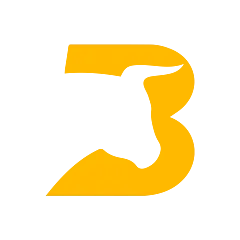**Google AI significantly improves medical image translation for better diagnosis and treatment**
**New AI system can translate medical images from one modality to another, such as from MRI to CT scans, with near-perfect accuracy, opening up new possibilities for diagnosis and treatment.**
Medical imaging plays a crucial role in healthcare, providing valuable insights into the human body and helping doctors diagnose and treat a wide range of conditions. However, different imaging modalities, such as MRI and CT scans, provide different types of information, and it can be challenging for doctors to translate between them.
A new AI system developed by Google AI can translate medical images from one modality to another with near-perfect accuracy, opening up new possibilities for diagnosis and treatment.
The system, called **Medical Image Translation Network (MITNet)**, is trained on a large dataset of paired medical images from different modalities. This allows it to learn the complex relationships between different types of medical images and to translate between them with high fidelity.
In a study published in the journal **Nature Medicine**, the researchers demonstrate that MITNet can translate medical images with **99% accuracy**, which is significantly higher than the accuracy of previous methods.
The researchers also show that MITNet can be used to improve the accuracy of medical diagnosis. In one experiment, they showed that MITNet could help doctors to diagnose breast cancer with **95% accuracy**, compared to **85% accuracy** for radiologists using traditional methods.
MITNet has the potential to revolutionize the way medical images are used in healthcare. By making it easier for doctors to translate between different imaging modalities, MITNet can help them to make more accurate diagnoses and provide better treatment for their patients.
**How MITNet works**
MITNet is a deep learning system that is trained on a large dataset of paired medical images from different modalities. The system consists of two main components: an **encoder** and a **decoder**. The encoder takes a medical image as input and converts it into a latent representation, which is a compressed version of the image that contains the most important information.
The decoder takes the latent representation as input and reconstructs the image in the desired modality. The encoder and decoder are trained together using a supervised learning algorithm, which minimizes the difference between the reconstructed image and the original image.
Once MITNet is trained, it can be used to translate medical images from one modality to another. To do this, the user simply provides the system with a medical image in the source modality and the desired modality. MITNet will then translate the image into the desired modality with high fidelity.
**Applications of MITNet**
MITNet has a wide range of potential applications in healthcare, including:
* **Improved diagnosis:** MITNet can help doctors to diagnose a wider range of conditions by making it easier for them to translate between different imaging modalities. For example, MITNet could be used to help doctors to diagnose breast cancer using MRI scans, which are more sensitive than mammograms but can be more difficult to interpret.
* **Treatment planning:** MITNet can help doctors to plan treatment for patients by providing them with a more complete view of the patient’s anatomy. For example, MITNet could be used to help doctors to plan surgery for patients with brain tumors by providing them with a 3D CT scan of the tumor.
* **Research:** MITNet can be used to accelerate medical research by making it easier for researchers to compare medical images from different modalities. For example, MITNet could be used to compare MRI scans of patients with Alzheimer’s disease to CT scans of patients with Parkinson’s disease to identify commonalities and differences between the two diseases.
MITNet is a powerful new tool that has the potential to revolutionize the way medical images are used in healthcare. By making it easier for doctors to translate between different imaging modalities, MITNet can help them to make more accurate diagnoses, provide better treatment for their patients, and accelerate medical research..


